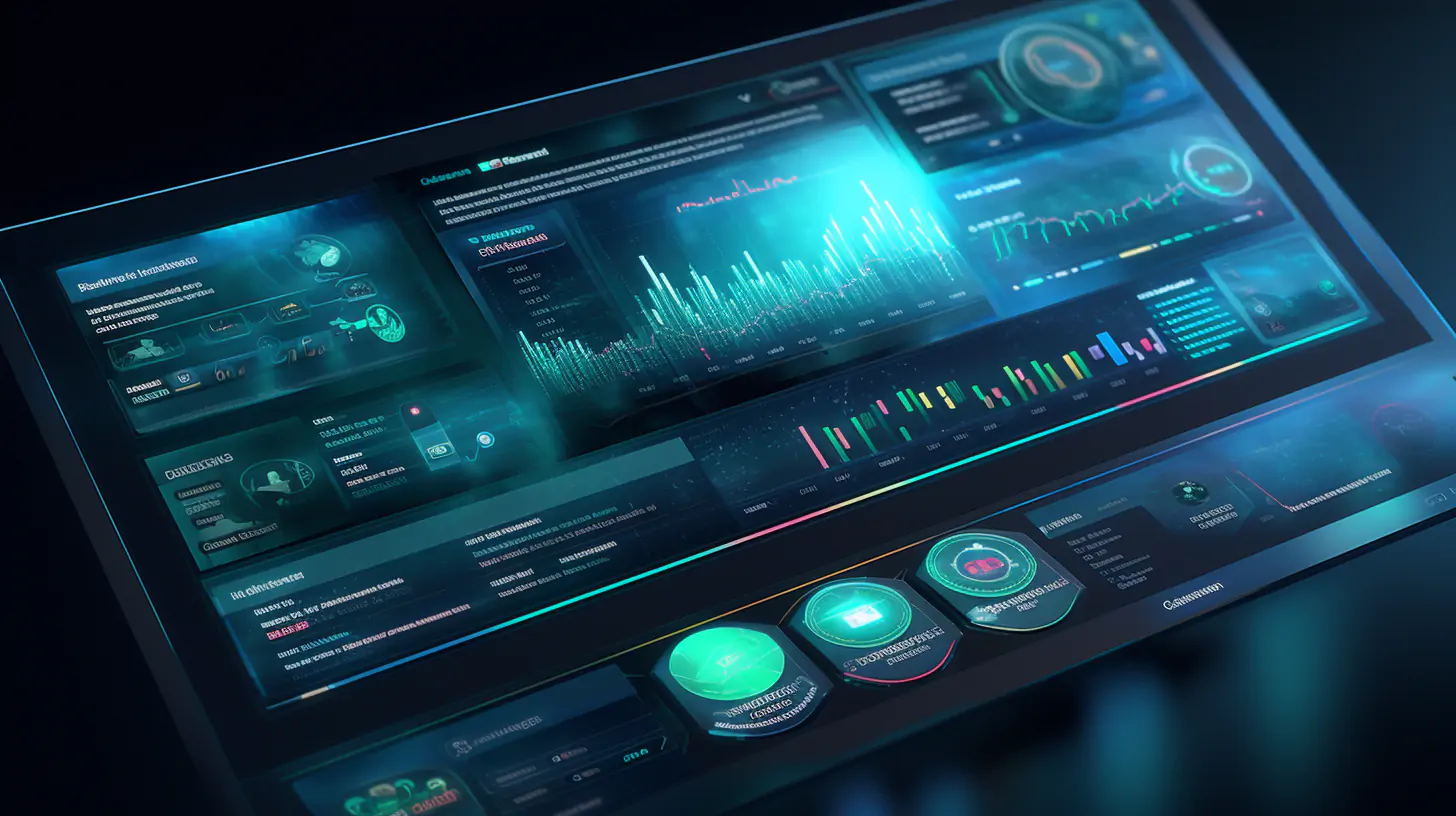Interesting statistics
WIP (Work in Progress) Limitations: Flow and Performance Optimization
Aggregate Flowcharts: Kanban System Performance Visualization
Measuring Flow Efficiency: Identifying Bottlenecks and Delays
Avoiding the Busy Trap: Using Metrics to Focus on Delivering Value
Challenges and Pitfalls in Measuring Kanban Flow and Performance
Beyond Metrics: Balancing Qualitative and Quantitative Information in Kanban
Critical Metrics for Evaluating Kanban Systems Introduction
Several essential criteria must be considered when assessing a Kanban system's efficacy. These indicators give a comprehensive picture of system performance, assisting teams in pinpointing areas for development and forming wise judgments.

Cycle time is an essential indicator for measuring how long it takes to finish a task or piece of work. It helps identify any process bottlenecks or areas needing optimization and provides insight into how well the workflow works. By monitoring cycle time, teams can set performance targets and objectives to reduce the time needed to accomplish work items.
Runtime, which tracks when a work item is requested until it is delivered to the customer, complements cycle time. This statistic enables firms to make data-driven decisions about delivery commitments by assisting them in understanding how long it takes to meet consumer demand. By lowering lead times, businesses can increase customer satisfaction and cut down on time to market.
Throughput is a metric that quantifies the amount of work completed in a given period. It offers a perception of the group's capacity for value creation and aids in detecting performance trends and patterns.
WIP (Work in Progress) restrictions are vital; monitoring this metric is critical to preserving flow and avoiding team overload. The maximum number of work items that can be processed concurrently is determined by WIP restrictions. Teams may avoid bottlenecks, reduce context shifts, and maintain a well-balanced workflow by establishing and adhering to WIP boundaries.
Cumulative flow charts (CFDs) visually represent the workflow in a Kanban system over time. CFDs keep track of the number of work items at all workflow phases, enabling teams to spot possible bottlenecks, observe trends, and assess the system's overall health. By evaluating CFDs, teams may make wise decisions to enhance workflow and boost system performance.
The defect rate is a metric that measures the number of defects or bugs found during the development or delivery process. Teams can assess their work's quality and pinpoint improvement areas by tracking fault rates. By reducing scrap rates, teams can improve customer satisfaction, product dependability, and delivery processes.
Utilization measures how efficiently resources are used in the Kanban system. It offers insight into the effectiveness of resource allocation and assists in locating potential improvement areas. Teams can maintain a balanced workload, avoid overusing or underusing team members, and optimize resource allocation by measuring utilization.
Predictability is a critical metric that helps teams accurately predict and communicate delivery dates. Teams can assess their capacity to accomplish work tasks on time by examining historical data and assessing important indicators like cycle time and throughput. Predictability enhances stakeholder participation, enables better planning, and increases team members' trust in their ability to fulfill promises.
Based on these KPIs, Kanban system evaluations can be conducted. It is crucial to keep in mind that the measurements may change based on each firm's unique requirements and environment. To successfully assess flow and performance in Kanban systems, metrics must be set according to your organization's goals and objectives.
Cycle Time Tracking: Kanban's Essential Metric
Cycle time is a crucial indicator of workflow effectiveness in Kanban systems. Teams may spot process bottlenecks, gauge how long it takes to complete work items and make data-driven decisions to streamline operations by analyzing cycle time.
To keep track of cycle times, note each work item's start and end timestamps. Determine the cycle time by calculating the time between these two places. Teams can pinpoint tasks or workflow steps that routinely take longer than anticipated by reviewing cycle time data, which enables them to concentrate on enhancing those areas. Teams can boost productivity, reduce delivery cycles, and enhance system performance by lowering cycle times.
Understanding Lead Time: Measuring Customer Wait Time
The time it takes for a work item to get from the moment it is requested to the time it is delivered to the client is measured as execution time. This statistic emphasizes client-centricity and enables businesses to gauge how long it takes to satisfy customer demand.
Start by recording a timestamp of when a work item is ordered and delivered to the customer to calculate lead time. By calculating the difference between these two timestamps, commands can calculate the length of their execution time. Organizations can locate locations where delays occur and take action to reduce them by examining lead time data. Shorter Lead times result in higher customer satisfaction, quicker market response, and competitive advantage.
Performance: Performance Evaluation in Kanban
A throughput statistic measures the work finished in a specific time frame. It offers a perception of the group's capacity for value creation and aids in detecting performance trends and patterns.
Count the work items that were finished in a specific time frame to gauge throughput. Teams can discover performance trends, comprehend capacity restrictions, and decide on resource allocation and work item prioritization by evaluating throughput data. Teams may enhance customer value, ensure a seamless workflow, and minimize downtime by improving throughput.
WIP (Work in Progress) Limitations: Flow and Performance Optimization
The maximum number of work items that can be active at once in a specific workflow stage is determined by WIP restrictions. Work-in-progress restrictions must be enforced to preserve flow, avoid team overload, and maximize productivity.
Teams provide a visual control system to help manage the workflow by defining WIP limits. WIP restrictions motivate teams to concentrate on completing tasks before beginning new ones, avoiding over-multitasking and context-switching. By keeping a balanced workload, teams may cut lead times, boost productivity, and provide a smoother, more predictable workflow.
Aggregate Flowcharts: Kanban System Performance Visualization
The robust visualization tools known as cumulative flowcharts (CFDs) offer a thorough overview of the process in a Kanban system. CFDs keep track of the number of work items at various workflow stages over time, enabling teams to spot possible bottlenecks, monitor trends, and evaluate the system's overall health.
Teams can detect areas of overload or imbalance, obtain insight into the distribution of work items across stages, and make data-driven decisions to optimize flow by evaluating CFD. Teams can use CFDs to forecast performance in the future, pinpoint opportunities for process improvement, and monitor the effects of system modifications.
Scrap Rate: Quality Assurance in Kanban Systems
The defect rate measures the number of errors or flaws discovered during development or delivery. The number of flaws must be tracked to assess the caliber of the job and pinpoint areas for improvement.
By gathering and analyzing defect data, teams can find patterns, underlying causes, and recurrent problems. As a result, they are better equipped to take remedial action, produce products of higher quality, and satisfy customers. Teams can improve workflows and procedures while establishing a reputation for providing high-quality goods and services by lowering defect rates.
Usage: Estimating resource allocation and capacity
Utilization gauges how effectively the Kanban system uses its resources. Provides details on workload distribution, resource distribution, and capacity management.
Using resources effectively boosts production, efficiency, and returns on investment for the firm. Teams can spot unused or overused places by monitoring resource usage. This enables them to balance the burden, allocate resources efficiently, and avoid bottlenecks.
Predictability: Using Metrics to Predict Delivery Times
Predictability is a crucial performance indicator for Kanban systems because it enables teams to estimate and communicate delivery dates precisely. Teams can assess their capacity to finish projects on time by examining historical data and assessing important indicators like cycle time and throughput.
Predictability enhances stakeholder communication, enables better planning and decision-making, and increases team members' trust in their ability to fulfill promises. Teams may increase their capacity to consistently and predictably produce value by monitoring and improving predictability metrics.
These are just a few critical Kanban metrics that businesses can use to gauge the success and flow of their Kanban systems. These measurements can help organizations increase productivity, shorten delivery times, boost quality, and increase customer happiness. Each statistic offers a distinctive perspective into many facets of the system, enabling teams to pinpoint problem areas, streamline their procedures, and continuously raise overall performance.
Measuring Flow Efficiency: Identifying Bottlenecks and Delays
Flow efficiency metric assesses how well work processes move through the Kanban system. The emphasis is minimizing delays, cutting downtime, and increasing time spent on activities that generate value.
Teams may optimize processes, increase efficiency, and hasten customer value delivery by eliminating these bottlenecks. Teams can compare the time spent on each workflow stage to the overall cycle time to determine the efficiency of the flow. This makes spotting process steps that cause system delays or bottlenecks easier.
Avoiding the Busy Trap: Using Metrics to Focus on Delivering Value
Teams frequently keep busy, but the actual objective is to add value. Metrics are crucial in assisting teams in focusing on value generation rather than just employment.
Teams can learn more about how well they satisfy consumers by monitoring cycle times, throughput, and lead times. Teams can prioritize tasks and focus on the most critical work using these KPIs as a reality check. Teams may be sure that their efforts will directly contribute to customer happiness and business success by concentrating on delivering value.
Interpretation and action according to Kanban metrics
Metrics collection and analysis are just the beginning. The actual value is how the data is interpreted and the results used.
It is crucial to consider both the organization's objectives and the context of the system when analyzing Kanban measurements. Metrics should be considered in conjunction with one another and the overall performance objectives rather than separately. Teams can identify areas for development and carry out focused activities to enhance the effectiveness of the Kanban system by comprehending patterns, trends, and correlations in data.
Continuous Improvement: Using Metrics to Optimize Processes
Kanban metrics is an effective tool for ongoing development. Teams can find chances to improve processes and achieve gradual gains over time by routinely gathering and reviewing metrics.
Teams can adapt and improve their Kanban systems using metric-based continuous improvement to increase productivity and efficiency. Teams with a continuous improvement culture can use measurements to find bottlenecks, eliminate inefficiencies, and try new processes. Teams can assess if they are obtaining the expected objectives and modify their approach by evaluating the impact of these adjustments using metrics.
Case Studies: Real Examples of Kanban Metrics in Action
Real-world case studies can offer insightful information on how businesses use Kanban measures to enhance performance.
Case studies show how measurements are used in various contexts and sectors. They demonstrate using particular metrics, difficulties encountered, and outcomes attained through data-driven decision-making. By looking at these case studies, teams can get ideas, learn from practical implementations, and adapt techniques to their Kanban systems.
Choosing the Right Metrics for Your Kanban System
Choosing the most pertinent metrics with the Kanban system is crucial to ensuring accurate measurements and insightful data. The aims, objectives, and needs of the organization should be reflected in the indicators.
Teams must consider the nature of the task, customer expectations, corporate priorities, and potential improvement areas when choosing the correct KPIs. Quantitative indicators offer numerical data and should be balanced with qualitative indicators, which record subjective comments. Teams may track the correct metrics and significantly enhance their Kanban systems by carefully selecting and modifying metrics.
Challenges and Pitfalls in Measuring Kanban Flow and Performance
There are several difficulties and dangers involved in measuring Kanban flow and performance. To achieve precise and trustworthy measurements, awareness of these potential impediments is essential.
Common problems include data inconsistency or correctness, the impact of outside influences on metrics, bias in data interpretation, and the danger of concentrating just on specific metrics without considering the bigger picture. Teams need to reduce these problems while keeping them in mind actively. This may entail establishing reliable data-gathering procedures, examining data sources, reviewing indicators regularly, and promoting candid and inclusive dialogues regarding data interpretation.
Beyond Metrics: Balancing Qualitative and Quantitative Information in Kanban
Although metrics offer useful quantitative information, it is also crucial to consider qualitative elements when assessing Kanban flow and performance.
Anecdotal evidence, stakeholder opinions, and subjective comments are all reflected in qualitative data. They assist in giving you a more accurate picture of system performance and user satisfaction. Teams can obtain a comprehensive perspective and reach well-informed decisions by mixing qualitative and quantitative data. This harmony fosters a culture of continual improvement based on data analysis and human experience and enables a greater understanding of the effects of change.
Evolving Metrics: Adapting to Changing Business Needs
Market conditions, business demands, and objectives might alter over time. To ensure the chosen indicators are pertinent and pertinent to the shifting context, it is critical to reevaluate and develop them continually.
Teams should periodically evaluate their performance in light of stakeholder comments, corporate goal changes, and customer expectations adjustments. Teams may maintain accurate measurements, track the appropriate metrics, and execute improvements in line with the shifting strategic direction of the firm by adopting metrics to change business needs.
Implementing Kanban Metrics: Best Practices
Creating a Kanban metrics system is crucial to adhere to best practices that offer precise measurements and insightful data. Take into account these suggestions:
Define clear goals: Establish the Kanban system's aims and objectives upfront. Recognize your goals and how metrics can be used to track your progress.
Match Metrics to Goals: Choose measurements consistent with your aims and ambitions. Ensure each metric offers pertinent and valuable data that enhances performance and flow.
Collect reliable data: Develop dependable data-gathering procedures to guarantee the accuracy and reliability of your metrics. Use reliable data sources and establish precise rules for data collecting and recording.
Analyze and Review Metrics Check your analytics frequently to spot trends, patterns, and areas that could use improvement. Review metrics frequently with the team to gain understanding, confirm facts, and fine-tune metrics.
Foster a culture of continuous improvement: Promote decision-making based on data to promote ongoing progress. Use analytics to spot areas for improvement, try out different process configurations, and track the effects of those changes.
Communicate and visualize metrics: Make sure all stakeholders can see and access metrics. Employ visualizations to efficiently communicate metrics and encourage data-driven discussions, such as dashboards, charts, or cumulative flowcharts.
Consider the context and external factors. Recognize the setting in which the metrics are assessed. Consider outside variables affecting performance, such as seasonality, market trends, or organizational changes. Adapt perceptions and actions as necessary.
The continual evolution of metrics: Selected metrics should be periodically reviewed and reevaluated to ensure they are accurate and in line with evolving business requirements. Adjust your measurements as necessary to effectively measure and track the correct data.
Encourage Collaboration and Learning: Promote cooperation amongst the team's stakeholders, subject-matter experts, and stakeholders. Discuss ideas, benefit from one another's knowledge, and look for chances to develop and advance.
Seek professional advice if necessary. Consider consulting with Kanban experts or consultants who can offer helpful knowledge and best practices if you are new to applying Kanban measurements or need expert advice.
By adhering to these recommendations, businesses may build a robust Kanban metrics system on encouraging continuous improvement, simplifying flow, and boosting productivity.
Conclusion
Kanban metrics offer priceless information about the performance and flow of Kanban systems. Teams may more efficiently detect bottlenecks, improve workflows, and provide value to customers by measuring essential metrics, including cycle time, lead time, throughput, work-in-progress limits, and defects.
It is essential to choose metrics that are in line with the objectives of the organization, to interpret the data continuously, and to act on the conclusions. Kanban measurements should be viewed as a driving force behind ongoing development, empowering teams to reorganize workflows, boost output, and foster a culture of value creation.
Organizations may maximize the effectiveness of their Kanban systems, make significant advancements, and reach higher levels of flow, productivity, and customer happiness by utilizing the power of Kanban metrics.
For teams and organizations aiming to boost productivity, deliver value to consumers successfully, and foster a culture of continuous improvement, measuring flow and performance in Kanban systems is crucial. Teams may gain insight into their workflow, spot bottlenecks, and make data-driven decisions to optimize their processes using indicators like cycle time, lead time, throughput, WIP limitations, and defect rates.
Choosing measurements that align with the organization's objectives is crucial, as gathering reliable data and interpreting the metrics in the context of a specific Kanban system. Metrics should be considered tools for continuous improvement to assist teams in making defensible decisions, putting changes into place, and monitoring the effects of those changes over time.
Implementing a Kanban metrics system successfully takes careful preparation, regular evaluation, and dedication to measurements that evolve in response to shifting business demands. Organizations may fully utilize the capabilities of their Kanban systems and achieve higher levels of flow, productivity, and customer happiness by adopting a data-driven strategy and upholding a culture of continuous improvement.




